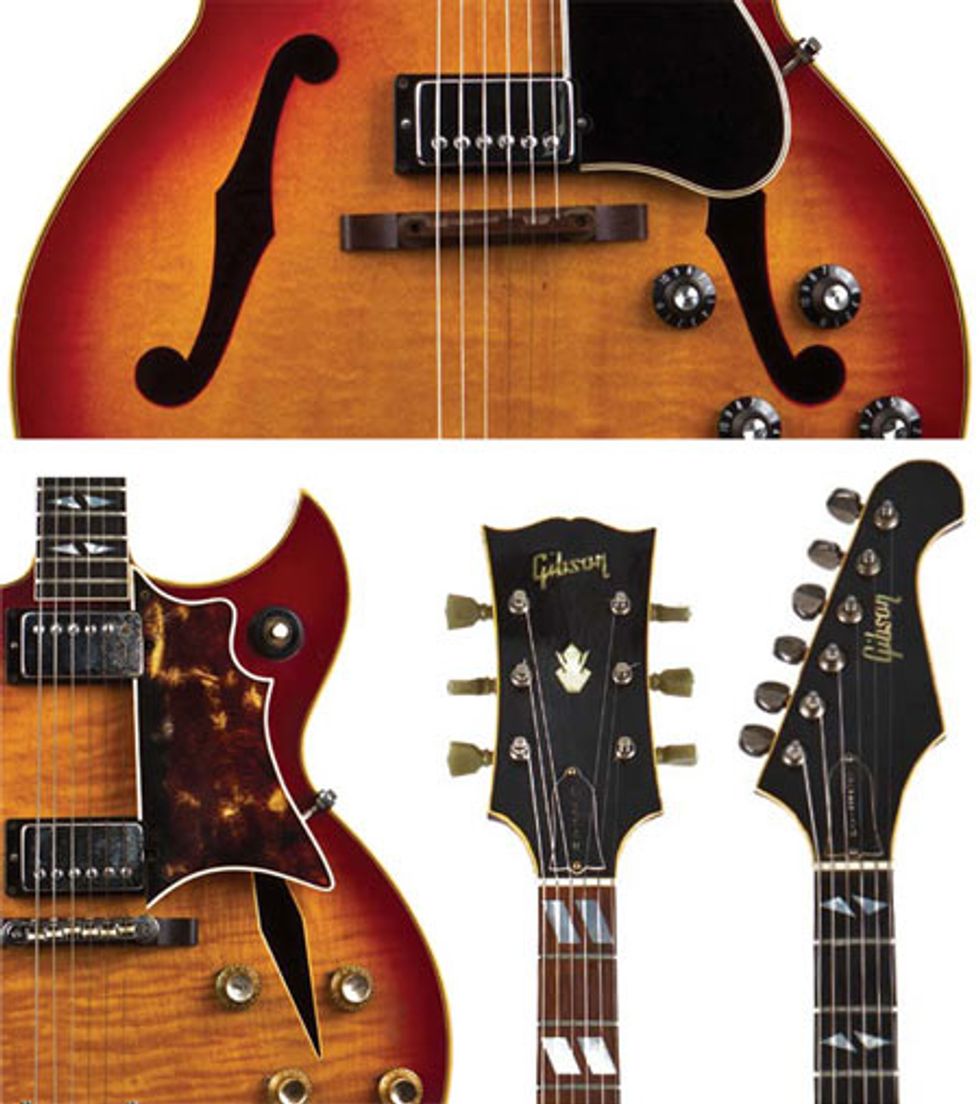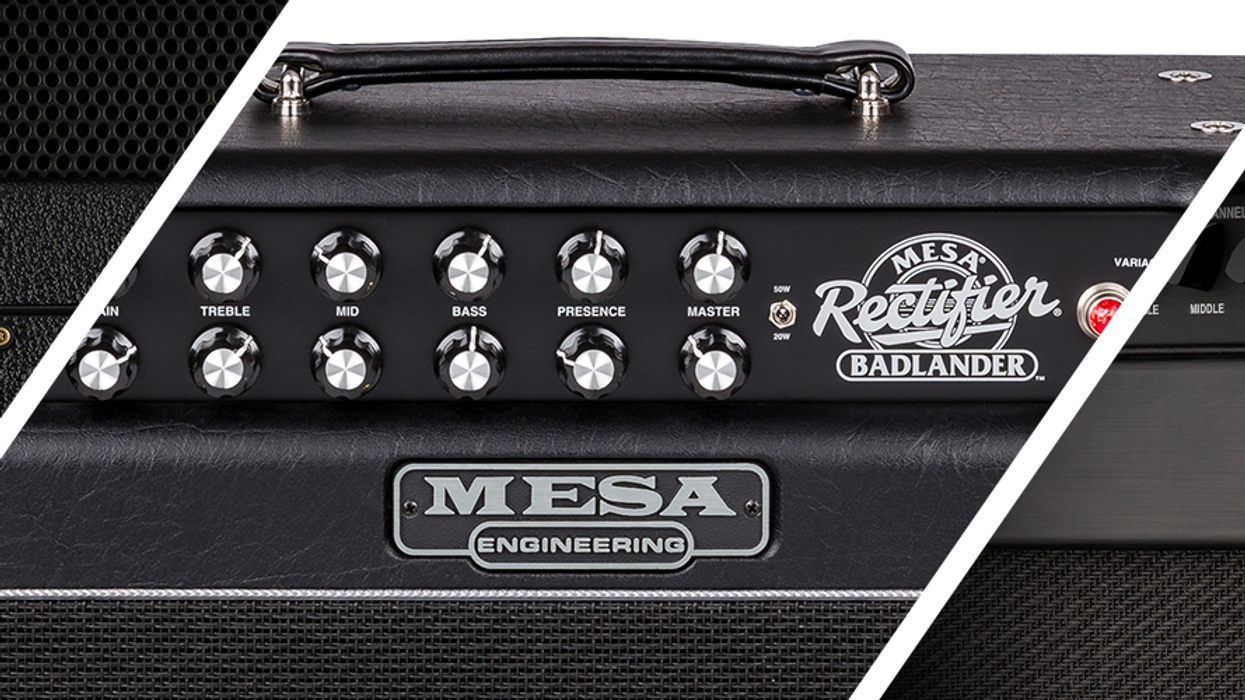Throughout its long and esteemed history, Gibson has kept its guitars associated with artists. Top players were often seen in Gibson advertisements and catalogs, and a few models were named after leading artists of the day, including Nick Lucas, Les Paul, Hank Garland, and Billy Byrd. By the early 1960s, Gibson accelerated this tradition by concentrating on even more artist-endorsed models. The list of ’60s players with signature Gibson guitars includes Tal Farlow, Johnny Smith, Barney Kessel, the Everly Brothers, and Trini Lopez.
The two Artist Models featured this month share the same body dimensions, wood, and unique double-cutaway. They are striking, distinctive guitars— especially when displayed side-by-side.
The Barney Kessel model was introduced in 1961 with input from the famous jazz guitarist. Kessel was a well-known swing and bebop player, and a sought-after session musician who backed Artie Shaw, Benny Goodman, Billie Holiday, and many others. His innovative guitar work and arranging for Julie London in the ’50s established his ability to provide orchestral sounding accompaniment with only an electric guitar and upright bass. Kessel also released a number of superb albums under his own name. The Barney Kessel model came in two versions: the Regular (pictured) and the fancier Custom.

TOP: Other than its distinctive double-cutaway, this Barney Kessel shares many attributes with earlier Gibson archtops, including a carved solid rosewood bridge and traditional f-holes. BOTTOM LEFT: This Trini Lopez Deluxe sports a standby switch and matching diamond-shaped soundholes and fretboard inlays. BOTTOM RIGHT: The Barney Kessel model’s headstock has a familiar Gibson shape and three tuners on each side, but the 6-inline Trini Lopez Deluxe veers unabashedly into Fender territory. Note the full-sized Grover Rotomatic tuners—this is an elongated headstock.
The Trini Lopez model was introduced in 1965 with input from the popular singer. After moving from Dallas to Beverly Hills in the early ’60s, he was discovered by Frank Sinatra and signed to Reprise Records. Lopez had several hit records, including covers of “If I Had a Hammer” and “Lemon Tree.” The Trini Lopez model also came in two versions: the Standard (based on an ES-335), and the Deluxe (based on the Barney Kessel). The main features that make the Lopez different from the Kessel are an asymmetrical “Fender-like” headstock, diamond-shaped soundholes and fretboard inlays, and a standby switch.
You’ll find a wealth of details on vintage Gibson electric guitars in Gibson Electrics—The Classic Years by A.R. Duchossoir. To read about Barney Kessel, check out swingmusic.net/Kessel_Barney_ Biography_Jazz_Guitar, and visit trinilopez.com to learn more about Trini Lopez.
Dave ’s Guitar Shop
Dave Rogers’ collection is tended by Laun Braithwaite and Tim Mullally and is on display at:
Dave’s Guitar Shop
1227 Third Street South
La Crosse, WI 54601
davesguitar.com
Photos by Mullally and text by Braithwaite.







![Rig Rundown: Russian Circles’ Mike Sullivan [2025]](https://www.premierguitar.com/media-library/youtube.jpg?id=62303631&width=1245&height=700&quality=70&coordinates=0%2C0%2C0%2C0)

















